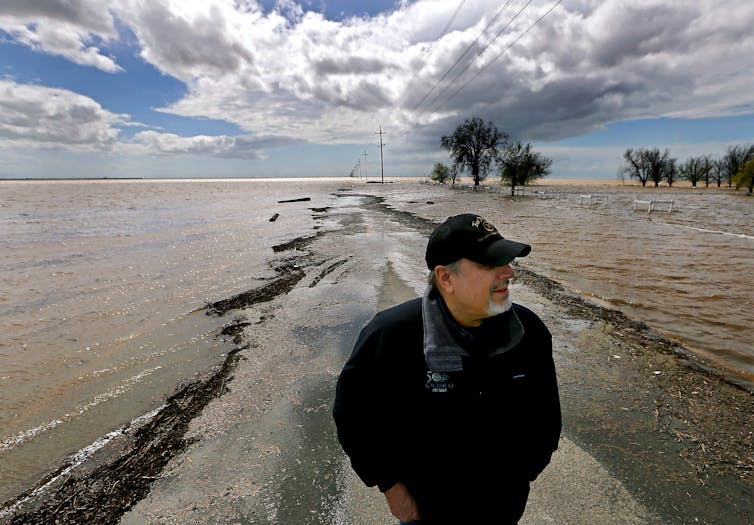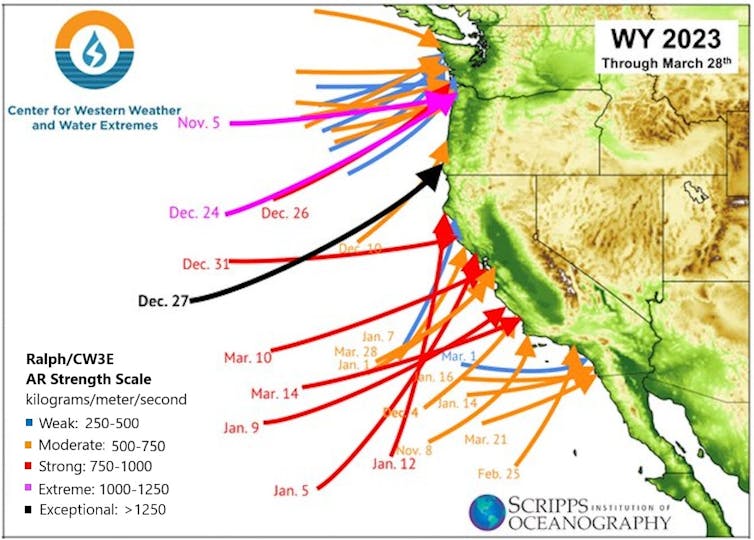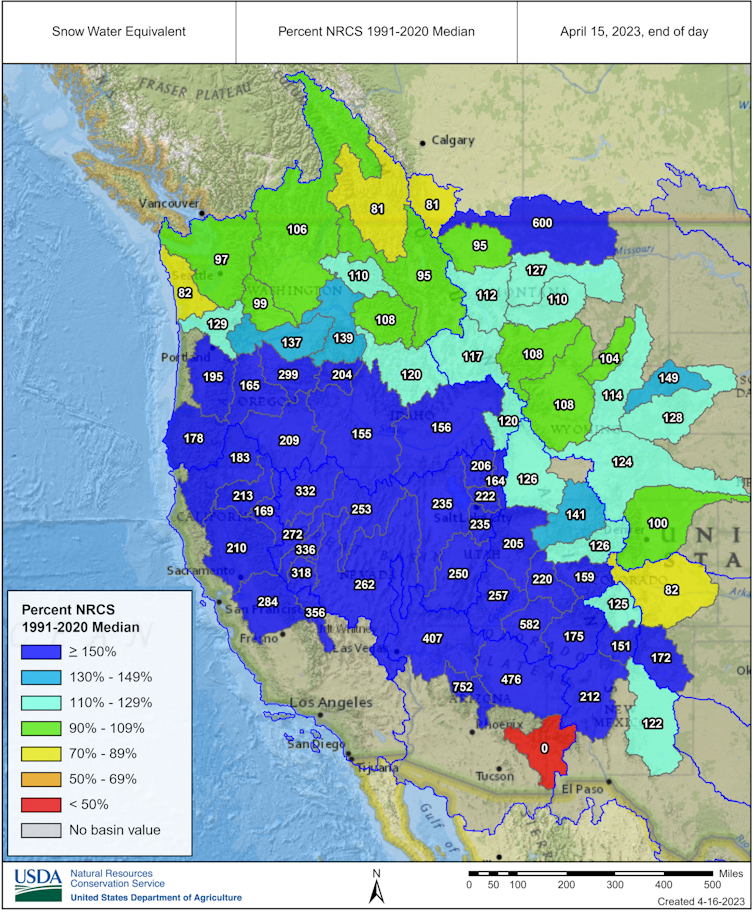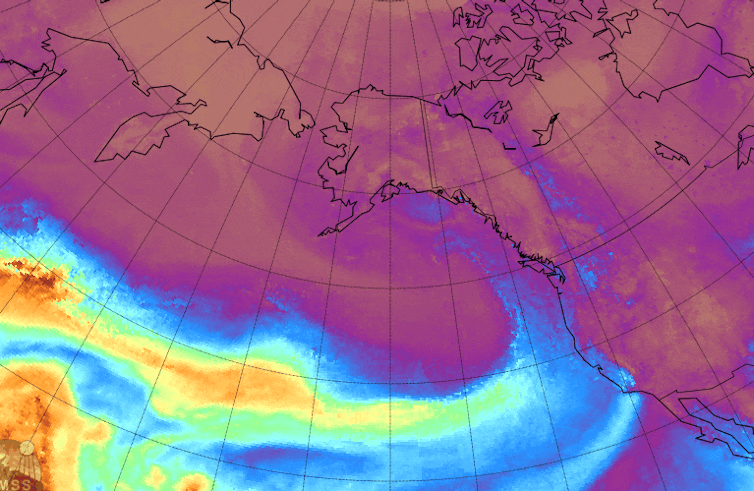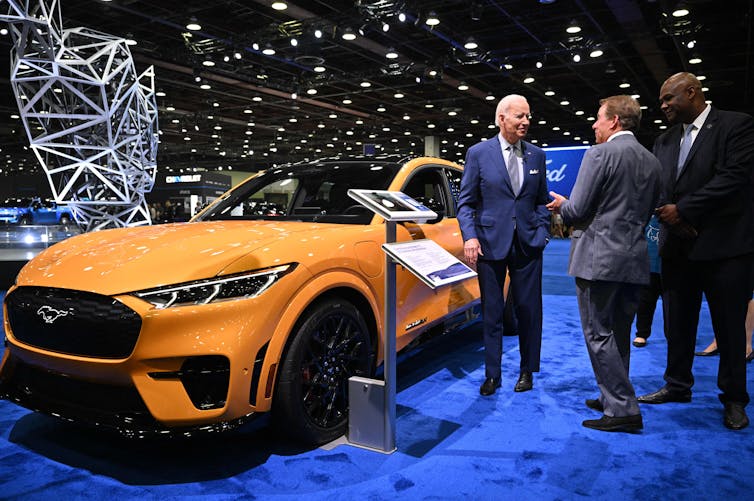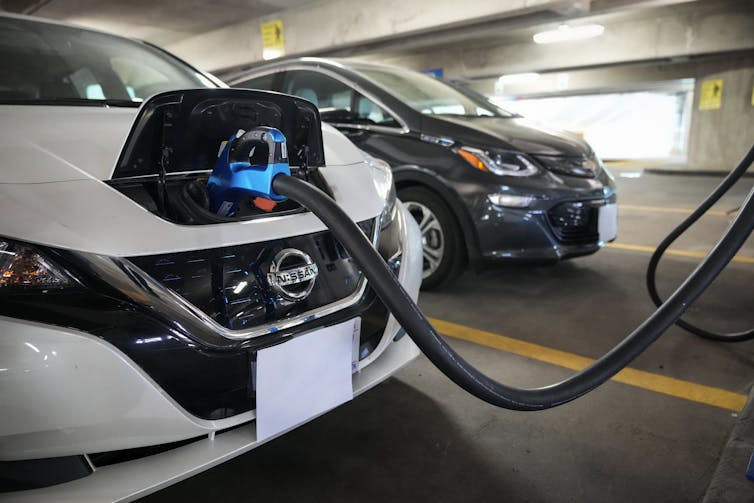What makes for a ‘great’ sex life?
Research into intimacy upends many popular notions about sexual fulfillment. One hint: It’s more about connection than technique.
The unhappiest time in a sex therapist’s office is around Valentine’s Day, says Dr. Peggy Kleinplatz, a professor in the faculty of medicine at the University of Ottawa. “It’s the day where I see the most miserable couples, the most distressed couples,” she says.
High pressure and expectations can prove an explosive combination for people already struggling with their sex lives. Sex, it turns out, isn’t as easy or simple as popular culture might lead us to believe.
Kleinplatz, trained as a clinical psychologist and sex therapist, has spent many years untangling the many reasons for sexual dissatisfaction. In 2018, she authored a review of the history of treatment of female dysfunctions in the Annual Review of Clinical Psychology, examining the controversial ways in which women’s sexuality in particular has been viewed and treated over the decades, and what might be the best way forward. She is director of the Optimal Sexual Experiences research team at the University of Ottawa; in 2020, she coauthored the book Magnificent Sex: Lessons from Extraordinary Lovers, inspired by findings from her long-term study of couples.
The recommendations from her and her colleagues’ research about how to build a more connected, fulfilling sex life are now being fine-tuned and rolled out on sex therapists’ couches. This interview has been edited for length and clarity.
One reason couples wind up in your office is a mismatch in desire: Perhaps one partner wants sex multiple times a day, and another less than once a month. How common is this?
This is the most common presenting problem in the offices of sex therapists.
The reason couples show up in our offices is not because of a problem in one or in the other, but because there’s a discrepancy between them, which we refer to as sexual desire discrepancy.
This can be problematic because sexuality represents such a central part of one’s identity. The feelings of rejection when your partner doesn’t feel like having sex, and the feelings of obligation when you don’t want to hurt your partner’s feelings, are enormous. A lot of couples end up resting their self-concept on whether or not they’re matching up well with their partner in terms of desire and frequency.
Let’s look at both sides of that coin. First, we have people with a very high sex drive. Is that a “disorder”?
If we look at the early editions of the diagnostic manual known as the DSM (Diagnostic and Statistical Manual of Mental Disorders) from the American Psychiatric Association in the 1950s, it listed problems of having too much desire. In women, this was referred to as nymphomania; the corresponding diagnosis for men is satyriasis. The diagnosis of nymphomania in a woman was fairly serious. A possible treatment for it in the 1950s was electroconvulsive therapy or frontal lobotomy. Men who had lots and lots of sex, and lots and lots of sexual desire, were generally not given a diagnosis and instead perceived as normal.
Then along comes the sexual revolution. And all of a sudden, the idea that “too much” was pathological was jettisoned. In 1980, the DSM-III got rid of the diagnoses of too much desire and replaced them with the diagnosis of too little desire. Theoretically, our diagnoses are supposed to be objective, empirical, value-free. But the history of how we diagnose reveals a great deal about sexual and social values.
How has the clinical perception of low desire changed over time for men and women?
In 1980, the DSM authors also said, “We need to do something about the gender bias that was there in the first DSM and DSM-II.” From 1987, they called it “hypoactive sexual desire disorder” for both men and women, when low desire causes distress.
But by the time we get to the DSM-V of 2013, they changed their minds again. They decided to have erectile dysfunction and hypoactive sexual desire disorder, separate, for men. But for women, they said to collapse them to “female sexual interest/arousal disorder.”
Low sex desire might simply be good judgment. “It’s rational to have low desire for undesirable sex.”
Was this decision to lump together desire and arousal a good idea? And by desire, we are talking about the frequency of wanting sex or having sexual fantasies; by arousal, we mean the physiological and psychological response to sexual stimuli.
I think it’s the obligation of clinicians to tease things apart. If you were to walk into your physician’s office and say, “I have a stomachache,” it’s the physician’s job to figure out if you ate something that gave you food poisoning, or if you’ve got an ulcer, or if you’ve got some kind of cancer in your abdomen, right? So I think that when it comes to sexual problems, it’s equally important for the onus to be on the clinician to tease out whether it’s a problem related to arousal or desire, regardless of whether your patient is male, female, trans, non-binary, etcetera.
Some clinicians might recommend compromise in a couple facing sexual desire discrepancy. Is that a good idea?
That is ill-advised. Neither partner is getting what’s actually desired. What clinicians will end up with is resentful patients who don’t trust their judgment.
One of the reasons it doesn’t work is because the clinician is being trapped into treating a symptom of a problem, framed in terms of frequency, rather than getting to the heart of what this symptom represents. It might represent an interpersonal problem, such as difficulty managing conflict. Or it might have to do with the quality of the sex itself.
“The focus of most research has been how to take bad sex and make it less bad.”
What looks like a problem of low sexual desire might be evidence of good judgment, perhaps even good taste. If I asked you to think about the last time you had sex, and what feelings come up inside of you, what I’m interested in is the extent to which the feelings that are brought forth within you are more like anticipation, as in “I want more of that,” or more like dread. It’s rational to have low desire for undesirable sex.
If the problem is bad sex, and the solution is better sex — magnificent sex, even! — has there been much scholarly research about that?
The focus of most research has been how to take bad sex and make it less bad. But most people don’t want sex that’s merely “not bad,” or that is mediocre. Most people want sex that makes them feel alive in one another’s embrace. In 2005, our research team began to study people who were having deeply fulfilling sexual encounters. We wanted to study what they were doing right, so that we could learn from them.
Who were these people — whom did you speak with?
Based on my clinical experience, some of the people who had impressed me most were people in their 60s, 70s and 80s who — because of life changes, perhaps disease, or disability, or becoming empty nesters or losing someone close to them — had to reinvent sex. It occurred to me to study other people who’ve been marginalized, who had similarly been forced to reinvent, redefine or re-envision sex.
And so we studied various kinds of sexual-, gender- and relationship-minority individuals: people in their 60s, 70s and 80s; people who are LGBTQ+; people who were in consensually non-monogamous relationships, people who are into kink, etc. All of these people had had to make conscious choices about what they wanted their sex lives to look like.
For the very first study, which we describe in our book, we studied 75 people, interviewing each for 42 minutes to nearly two hours.
What did you learn about magnificent sex? Is it all about orgasms?
Contrary to what we hear in the mainstream media that great sex is all about tips and tricks and techniques and toys that culminate in earth-shattering orgasm, among the individuals we have studied and have come to call “extraordinary lovers,” orgasms were neither necessary nor sufficient components of “magnificent sex.” The qualities that made sex worth wanting were deeper, and less technique-focused.
Each erotic experience is different, but virtually all the extraordinary lovers described the same eight components and seven facilitating factors.
What were these components and facilitating factors?
Two of the components that people tended to mention fairly often were being embodied, absorbed in the moment, really present and alive; and being in sync with and connected to the other person, so merged that you couldn’t tell where one person started and the other person stopped. It’s quite something to be fully embodied within, while simultaneously really in sync with, another human being.
The other components included: erotic intimacy, empathic communication, being authentic, vulnerability, exploring risk-taking and fun, and transcendence. By empathic communication, I don’t just mean verbal communication; I mean being so in tune with your partner that you can practically feel in your own skin the way that your partner wants to be touched most. One participant described transcendence as: “An experience of floating in the universe of light and stars and music and sublime peace.”
Were there revealing differences between, say, men and women?
When one partner wants more — or less — sex than the other, compromise is not the answer.
In the literature they often presume, and maybe even have evidence for, differences between men and women, the young and the old, the LGBTQ versus the straight, the monogamous versus the non-monogamous, etcetera. But in our research, we found that the experience of what we have come to call “magnificent sex” was indistinguishable between these different groups.
There were only two people — me and my then-doctoral student Dana Ménard, now Dr. Dana Ménard at the University of Windsor — who knew who was whom. All the other members of the research team saw only de-identified, written transcripts. And they would look at the transcripts and make assumptions about the participant’s identity and their guesses were inaccurate. The people they thought were men turned out to be women, people they thought were kinky were people who identified instead as vanilla, and vice versa. What it takes to make a person glow in the dark was virtually universal among our participants.
Did you hear any particularly striking stories?
There was one couple that we interviewed, for example, who were both in their 70s, semi-retired. These individuals said: “We used to have sex three times a week. Well, we’re in our 70s now, so we only have sex once a week. When we get home from work on Thursday, we head into our kitchen to begin ‘foreplay’: chop up fruits, vegetables, enough healthy things so that we have enough food to last us until we go back to work on Monday morning, without ever having to get out of bed. We don’t have to do the dishes. We don’t have anything else to do except to have sex with each other for three-and-a-half days. So, we only have sex once a week now. But it lasts from Thursday afternoon until Monday morning.”
That’s an extraordinary example, but it really speaks to a recurring theme in your book of being willing to devote considerable energy, time and dedication to the pursuit of a good sex life.
Yes. One of the myths that we hear constantly in the mainstream media is that sex should be natural and spontaneous. And we see that same myth reiterated in porn. The reality is that extraordinary lovers choose to devote time and energy to this most valued of their pursuits. That’s a crucial lesson for all of us. Great lovers are made, not born.
Has your research led to clinical applications?
Around 2012, we started to study: How might we take the lessons from the extraordinary lovers and apply them to couples who were suffering from sexual desire discrepancy? And could it actually help them?
A lot of psychotherapy is expensive. And it’s out of reach of people with limited budgets or limited insurance. Given that one of the foundations of our work as a research team has been social justice, we decided to be as inclusive as possible by setting up group therapy. We developed an eight-week intervention helping couples to become more vulnerable, authentic, playful and so on.
Does it work?
We now have spent 10 years researching this — and, it works. That’s the short version.
“Extraordinary lovers choose to devote time and energy to this most valued of their pursuits.”
On two psychometric scales of sexual satisfaction and fulfillment, we find clinically meaningful and statistically significant change in couples from the beginning of the intervention to the end. But the really valuable thing is that the changes seem to be sustained six months later: There are enduring changes in their sexual fulfillment. Participants describe marked improvements in trust, creativity, embodiment, negotiation of consent and empathic communication.
How did the pandemic affect your work?
Even in the first year of pandemic we were hearing that there were more and more couples struggling, because they were home 24/7, working from home 24/7, taking care of their kids 24/7. Marriages were strained.
We moved the group therapy online, using a platform compliant with HIPAA (the Health Insurance Portability and Accountability Act) for the sake of security and confidentiality. And our data, much, to my astonishment, showed that the online group therapy is every bit as effective, which makes it even more accessible to more people. It means that they don’t have to pay for parking, pay for babysitters, worry about winter driving or how to find a sex therapist in the middle of Iowa. We’re now training people all over the world who are getting the same effective outcomes.
What’s your focus on now? Any new projects in the works?
Our focus now is on offering this approach to therapy for another group of people who may really need it: couples facing cancer. Cancer itself can be devastating to a person’s sex life, as can chemotherapy, radiation and the surgeries that are often required to save people’s lives. So that’s our current endeavor: applying what we’ve learned during Covid-19 about the effectiveness of online group therapy to couples facing cancer at every stage from diagnosis through survivorship. Why not embrace life for as long as we live?
This article originally appeared in Knowable Magazine, an independent journalistic endeavor from Annual Reviews.





